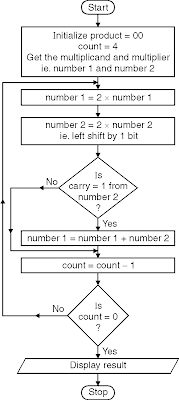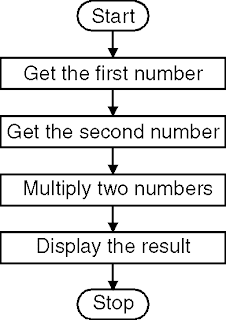Objective
In this post we will see how to write assembly program to Multiply Two 8 Bit BCD Numbers. Both the numbers will be provided as input to the program which in the end will calculate product. After calculation it will be adjusted before printing it to screen.
Multiple two 8 bit BCD numbers Algorithm
Program Code
We need to declare two number and load the first number in AL and then second number in BL. Do the multiplication of these numbers and adjust based on unpacked BCD number which is must before printing the result.
.model small
.data
a db 04H
b db 06H
.code
mov ax, @data ; Initialize data section
mov ds, ax
mov ah, 0
mov al, a ; Load number1 in al
mov bl, b ; Load number2 in bl
mul bl ; multiply numbers and result in ax
aam ; adjust result to valid unpacked BCD
mov ch, 04h ; Count of digits to be displayed
mov cl, 04h ; Count to roll by 4 bits
mov bx, ax ; Result in reg bx
rol bx, cl ; roll bl so that msb comes to lsb
mov dl, bl ; load dl with data to be displayed
and dl, 0Fh ; get only lsb
cmp dl, 09 ; check if digit is 0-9 or letter A-F
jbe l4
add dl, 07 ; if letter add 37H else only add 30H
add dl, 30H
mov ah, 02 ; Function 2 under INT 21H (Display character)
int 21H
dec ch ; Decrement Count
jnz l2
mov ah, 4cH ; Terminate Program
int 21H
end
You can find more assembly language codes on this link. You can run this program using TASM which need to be installed on windows machine. Program running steps are :






